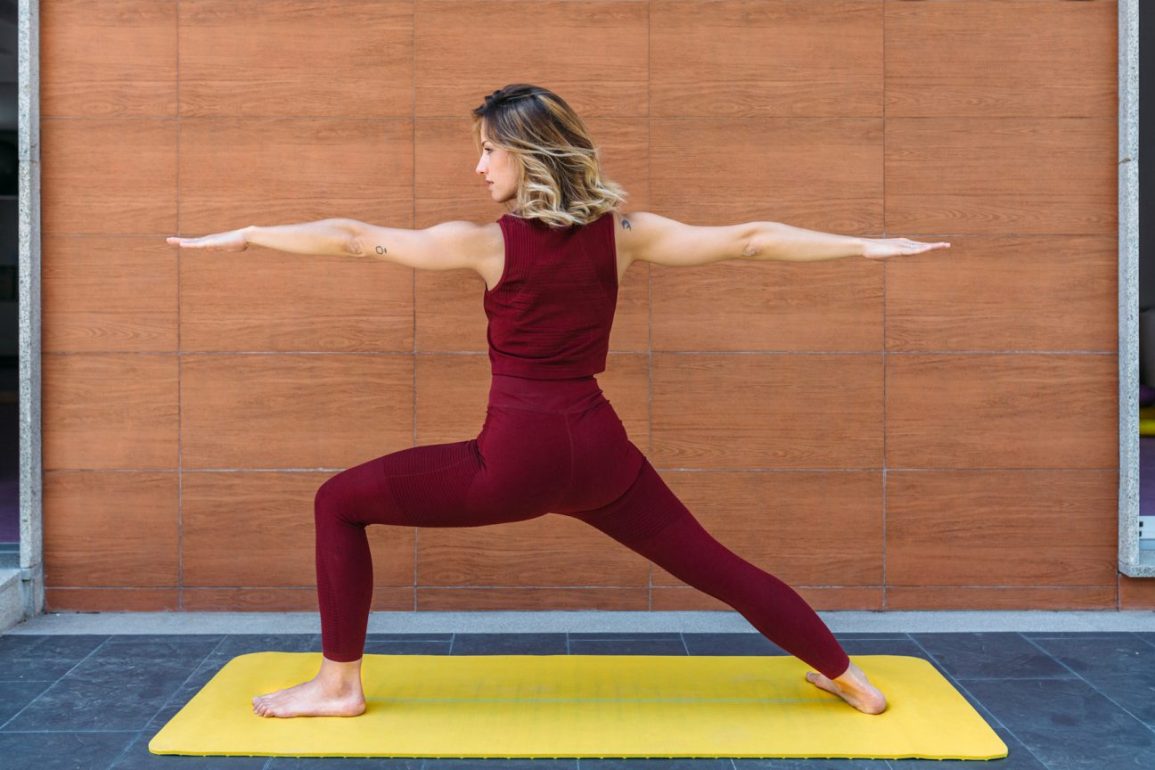
A yoga sequence's overall experience is the most important thing. These qualities should be apparent in yoga poses and every class should be tailored to address specific aspects of the practice. You must consider the time of year, season, moon phases, and current events when you sequence yoga poses. It is important to stay focused on your goals. These are some tips to create a successful yoga sequence. Choose the best poses to focus your attention in order for you to get the most from your classes.
The first step is to decide when you will teach the poses. Beginners usually find it easier to start off with a warm-up yoga sequence, but more experienced yogis can also use a yoga warm-up to avoid injury. Beginners can begin by sitting comfortably on a stool or block. Next, they can try part 2. To make the sequence more challenging, add more advanced variations to it.
After you've chosen your peak poses, add some stretches and meditations to the sequence. This will enable students to be more aware and understand their body alignment. It is important to consider the needs of each student when planning your sequence. Start with easy asanas if your classes are for beginners. Practice them slowly, and then gradually, during your class.

Consider the physical needs of your students when designing the sequence. Your students should be able perform the top postures by the third class. The sequence should feel effortless and invigorating if it is well-structured. You should also remember that yoga is about the process, not the end result. Enjoy the practice and the journey. This will ensure that it goes smoothly. Your body, breath, and the rest should all be truthful.
Understanding the needs and abilities of your students is essential before you start teaching yoga. Good yoga classes can move students smoothly through poses, and they will feel comfortable. It will also give you confidence as a teacher. Make sure your students have the right yoga experience. For beginners, a yoga class should not start with a seated pose. A stretch should follow the posture. It is important not to adopt the wrong postures.
Remember that yoga teachers must be flexible when teaching classes. A new student might need more time to master the basics. You may need to spend more time doing the poses. Remember to assess the ability of your students when you teach a class. Those with new injuries may need to take longer than the usual time to get used to the poses.
Yoga sequences are very important and will help students reach their goals. It is very important to do the proper poses in the correct order. It is crucial that you are able to recognize the importance of postures in yoga classes. You must choose the poses that best suit your students. You should not neglect your students' needs. Respecting your students' needs is essential. If you can't effectively teach yoga classes, it won't be possible for you to teach good classes to your students.

Using a yoga sequence is important. It allows you the flexibility to add the poses to your classes. If you don't have a yoga class, you can practice in the comfort of your own home. Make a playlist that you like. This is not only a great method to teach yoga, but it can also help you build your confidence. This will help you feel confident in your ability and self-worth.
A great way to provide a memorable experience for your students is to create a yoga sequence. If you create a sequence that works for you, your students can learn to follow it. If you practice, you will be able create a wonderful class. You will also be more likely to make your students feel comfortable and happy, too. This is your best teaching gift. This will ensure your students have an enjoyable experience.
FAQ
What is a good 7-day workout schedule?
A seven-day exercise plan should include cardiovascular training (running/biking/swimming), strength exercises (using weight machines, free weights) and one flexibility/core program (yoga or Pilates). Each activity must be completed at least once per week. Maximum 45 minutes should be allotted for each session.
Cardiovascular Exercise: Running/Biking/Swimming
It is important to complete at least 60 minutes of cardio per week. Try to do 75 minutes per semaine for the best results. Cardio exercises can be used to increase blood flow, stimulate muscle growth, and improve blood circulation.
Strength Training
While cardio exercises target the heart and lungs, strength training targets the muscles and bones. Strength training can help you burn calories even when you're not working out.
Flexibility and Core Workouts
Core and flexibility exercises are great ways of strengthening your whole body. Yoga and Pilates are both excellent choices.
What is a good exercise routine?
Regular exercise is essential to staying fit. It doesn't matter what type of fitness activity you choose as long as you do it regularly. Consistency and consistency are the keys to success. If you want to achieve results, you must stick at it for an extended period.
Start by doing small amounts of daily physical activity (like walking). Gradually increase your exercise time until you are able to spend 30 minutes per day. You can do this running, swimming weight training, yoga or aerobics classes.
Try to make sure you exercise on all days of the week. Don't miss any sessions unless you have an excuse.
When exercising outside, make sure you have the right clothing and shoes. You also need to consider the weather conditions and whether they affect your ability to exercise safely.
When exercising, ensure you drink lots of water. Avoid alcohol consumption during this time as it can lead to dehydration. Also, avoid caffeinated drinks such as coffee, tea, and cola. They will not only give you more energy but also dehydrate you.
It's common to feel tired after your first workout. If you stick with your training program, you'll feel more awake and alert.
Do you allow me to go to the fitness center 7 days a semaine?
You can go to the gym seven times a week, but not at once. You must find a time you can do it without feeling exhausted and depleted.
This will help to keep you focused and give you energy for other things.
You should also ensure that your meals are well-balanced. This will ensure that you aren't tired and slow when you go to the gym.
Last but not least, ensure there are no other people competing for your time. If you have children, it is a good idea to avoid going to school on the evenings as they can distract from your workout.
Statistics
- Get free shipping and 25% off today. (healthline.com)
- Are You One of the 20% of Guys (mh.co.za)
- An estimated calorie range for moderately active adult males falls between 2,200 to 2,800 calories per day, depending on age. (eatright.org)
- By John Thompson Take a whopping 38% off a set of PowerBlock Pros. (menshealth.com)
- Candidates and applicants must pass all four tests at 70% (minimum level) to graduate from Basic Deputy U.S. Marshal (BDUSM) Training. (usmarshals.gov)
External Links
How To
What nutrients do men need each day?
Men require daily nutrition for healthy growth and development. The body requires vitamins and minerals, protein, carbohydrates, fats (fats), water, fiber, as well other essential elements.
You also need specific nutrients for different times in the day. Your body makes hormones, antibodies and enzymes when you are asleep. When you wake up, your body uses protein to repair damaged tissue and build muscles.
Your body uses the night to break down fat and store extra energy as glucose. Your body requires fewer calories, but still needs enough nutrients. If you feel hungry, you can have a snack in the evening.
For your body to function properly, it needs adequate amounts of protein and carbs. You may feel sore muscles if you exercise hard.
You must ingest carbs and protein within two hours of training to prevent this. Your body will breakdown stored glycogen and provide you with glucose for energy.
In addition, you must consume protein immediately after completing your workouts. This prevents muscle tissue from being broken down while you are sleeping.
Your body can produce lactic acid during intense physical activity. It is a form of lactic acid that builds up in the bloodstream. This causes fatigue. Eat foods high in carbohydrate, such as fruits, vegetables, to avoid this.
Carbohydrates provide energy for your body to recover after strenuous exercise.
A healthy diet should include lean meats such as fish, eggs and milk, cheese, yogurts, beans, seeds, nuts, and beans.
All of these foods contain high-quality protein. Protein helps to repair and grow muscles. It also provides the amino acids your body needs to produce sex hormones and testosterone.
To maintain healthy skin, hair, and joints, you also need sufficient dietary fats. Healthy men need to consume between 20%-35% of their total calories from fat.
Fat is good for your heart and helps you fight cancer. It helps keep your brain working properly.
Vegetable oils, such as olive oil, sunflower oil or corn oil, soybean oil and peanut oil, can supply most of the fats you require.
These oils have high amounts of monounsaturated oil fatty acids, (MUFAs). MUFAs can lower cholesterol levels and reduce inflammation. They protect your cells and prevent damage from free radicals.
Saturated fats (SFAs), are found mainly in animal products such as meat, milk products, and butter. SFAs raise LDL ("bad") cholesterol and increase triglycerides. They can also increase weight and reduce belly fat.
Polyunsaturated fats (PUFAs) are found in plant-based sources like vegetable oils, nuts, seeds, and grains. PUFAs improve cardiovascular function and decrease inflammation. They are also good for controlling blood sugar and cholesterol.
Erectile dysfunction can often be a problem for men who have low HDL ("good") levels of cholesterol. A high intake of saturated fats leads to higher levels of bad cholesterol.
Men who eat a lot of red meat or pork develop prostate problems because they contain large amounts of nitrates. If cooked at high temperatures, the nitrates become nitrosamines. These compounds can cause cancer.
Most processed meats contain nitrites or other harmful chemicals. They should be avoided.
The American Heart Association suggests that no more than two servings per week of red meat should be consumed. Instead, choose poultry or fish, beans, tofu and whole grain bread.